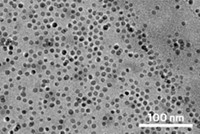Advertisement
Grab your lab coat. Let's get started
Welcome!
Welcome!
Create an account below to get 6 C&EN articles per month, receive newsletters and more - all free.
It seems this is your first time logging in online. Please enter the following information to continue.
As an ACS member you automatically get access to this site. All we need is few more details to create your reading experience.
Not you? Sign in with a different account.
Not you? Sign in with a different account.
ERROR 1
ERROR 1
ERROR 2
ERROR 2
ERROR 2
ERROR 2
ERROR 2
Password and Confirm password must match.
If you have an ACS member number, please enter it here so we can link this account to your membership. (optional)
ERROR 2
ACS values your privacy. By submitting your information, you are gaining access to C&EN and subscribing to our weekly newsletter. We use the information you provide to make your reading experience better, and we will never sell your data to third party members.
Synthesis
Academic Award
by Stephen K. Ritter
October 16, 2014
| A version of this story appeared in
Volume 92, Issue 42
Shannon S. Stahl, University of Wisconsin, Madison, for developing aerobic oxidation reactions for pharmaceutical synthesis using an inexpensive copper catalyst and O2
As oxidizing reagents go, molecular oxygen is as green as they get. But two issues have stood in O2’s way, according to chemistry professor Shannon S. Stahl of the University of Wisconsin, Madison. “The combination of O2 with organic solvents is widely viewed as an insurmountable safety challenge,” Stahl says. “And there aren’t any aerobic oxidation reactions good enough to bother dealing with the safety issue.”
Stahl and his research group recently knocked down both barriers, an accomplishment that many in the pharmaceutical industry will welcome. O2 is rarely considered as an oxidant because of the risk of fire or explosion. That leaves chemists the option of using traditional oxidants such as permanganate and hypochlorite, which are often hazardous, generate excessive waste, or are costly. In many cases, alternative synthetic routes are chosen that avoid oxidation altogether, even if they are less efficient.

Jessica M. Hoover, Janelle E. Steves, and their coworkers in Stahl’s group worked around those shortcomings by discovering a catalytic system made up of a copper(I) bipyridine complex and the nitroxyl radical TEMPO. This catalyst works well to mediate selective oxidation of primary alcohols to aldehydes, oxidative coupling of alcohols with ammonia to make nitriles, and other reactions. The reactions proceed at room temperature in acetonitrile solvent with O2 from the air as the oxidant. The procedure avoids costly precious-metal catalysts and undesirable halogenated solvents. And water is the only waste product.

To explore strategies for implementing the aerobic oxidations, Stahl has collaborated with Wisconsin chemical engineering professor Thatcher W. Root. Stahl has also established a unique noncompetitive research collaboration with Eli Lilly & Co., Merck & Co., and Pfizer. One of the most promising approaches emerging from these efforts involves a continuous-flow reactor for safely scaling up O2 oxidations that are complete in as little as three minutes.
“This work is spectacular,” says Cornell University chemistry professor Geoffrey W. Coates, a 2012 award winner. “This is a real tour de force that combines mechanistic studies with organic synthesis and very elegantly applies it to an important area of chemistry.”
Sustainability and economics are key when it comes to developing green reactions, Coates adds. Stahl’s approach includes everything process chemists look for––improving safety, saving time, reeling in cost, and preventing waste. “The interaction with leading pharmaceutical companies is a validation that this chemistry is on its way to the top.”





Join the conversation
Contact the reporter
Submit a Letter to the Editor for publication
Engage with us on Twitter